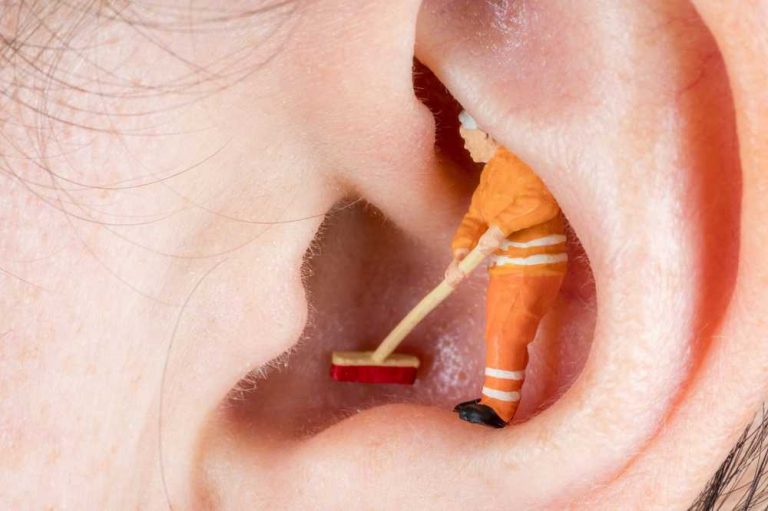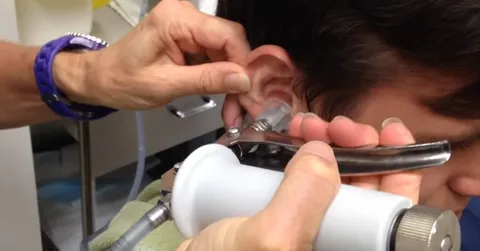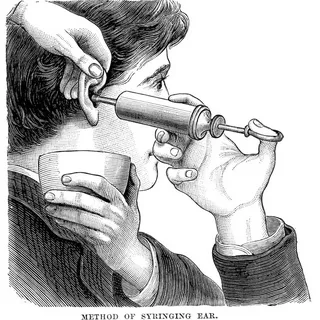Introduction
Welcome to our comprehensive guide on ear wax blockage treatment and diagnosis. Ear wax, also known as cerumen, is a natural substance produced by the glands in the ear canal. It serves as a protective barrier, trapping dirt and preventing infections. However, an excessive build-up of ear wax can lead to discomfort, hearing loss, and other complications. In this article, we will explore various treatment options and diagnostic methods to help you maintain healthy and clear ears.
Ear Wax Blockage Treatment & Diagnosis
Ear wax blockage, also known as cerumen impaction, can occur due to various factors. Understanding the causes and symptoms is essential for effective treatment. Let’s delve deeper into this common ear-related issue.
What Causes Ear Wax Blockage?
Ear wax blockage can be caused by several factors, including:
- Excessive Ear Wax Production: Some individuals naturally produce more ear wax than others, making them more prone to blockages.
- Narrow Ear Canals: Individuals with narrower ear canals may be more susceptible to ear wax build-up.
- Improper Ear Cleaning: Inserting objects such as cotton swabs or bobby pins into the ear canal can push the wax deeper and lead to blockage.
- Frequent Use of Earplugs or Hearing Aids: Continuous use of devices that sit in the ear can increase the likelihood of ear wax accumulation.
- Aging: As we age, the consistency of ear wax may change, making it harder to naturally move out of the ear canal.
Understanding the causes will help individuals take necessary precautions and seek appropriate treatment when needed.
Symptoms of Ear Wax Blockage
Ear wax blockage can manifest through various symptoms, including:
- Earache: A persistent, dull pain in the ear can be a sign of wax blockage.
- Hearing Loss: Partial or temporary hearing loss can occur when the ear canal is blocked.
- Tinnitus: Individuals may experience ringing or buzzing sounds in the affected ear.
- Ear Itching and Discomfort: Blockage can cause itching, discomfort, or a feeling of fullness in the ear.
- Dizziness and Vertigo: In some cases, ear wax build-up can lead to dizziness or a sensation of spinning.
- Coughing: Rarely, the stimulation of the ear canal by ear wax can trigger a cough reflex.
Recognizing these symptoms is crucial for prompt intervention and preventing further complications.
How is Ear Wax Blockage Diagnosed?
To diagnose ear wax blockage, healthcare providers employ various techniques. These may include:
- Visual Examination: Using an otoscope, a specialized instrument with a light, the healthcare provider can examine the ear canal for signs of blockage.
- Audiometry Test: This test assesses the individual’s hearing ability and can help determine if hearing loss is related to ear wax blockage.
- Tympanometry: By measuring the movement of the eardrum in response to changes in air pressure, healthcare providers can evaluate the presence of blockage.
Once diagnosed, appropriate treatment measures can be recommended based on the severity and individual circumstances.
Self-Care Remedies for Ear Wax Blockage
In mild cases of ear wax blockage, individuals can try self-care remedies at home to help alleviate the discomfort and promote natural wax removal. Here are some effective options:
- Softening Drops: Over-the-counter ear drops containing mineral oil, baby oil, glycerin, or hydrogen peroxide can be used to soften the wax, making it easier to remove.
- Warm Water Irrigation: Flushing the ear canal with warm water using a bulb syringe can help dislodge the softened ear wax.
- Gravity Technique: Lie on your side with the affected ear facing down and stay in that position for a few minutes to allow gravity to pull the wax out naturally.
- Chewing and Jaw Movement: Chewing food vigorously or moving the jaw from side to side can stimulate the natural movement of the jaw muscles, helping to dislodge the ear wax.
- Avoiding Cotton Swabs: Refrain from using cotton swabs or other objects to clean the ears, as they can push the wax deeper and worsen the blockage.
It’s important to note that these self-care remedies should only be attempted if there are no contraindications or pre-existing ear conditions. If symptoms persist or worsen, it’s advisable to seek professional medical assistance.
Professional Treatment Options
In cases where self-care remedies do not provide relief or the blockage is severe, professional treatment options may be necessary. Let’s explore some effective treatments provided by healthcare providers:
- Ear Irrigation: Ear irrigation, also known as ear syringing, is a common procedure performed by healthcare providers to remove excessive ear wax. During the procedure, warm water or saline solution is gently flushed into the ear canal to dislodge and flush out the wax.
- Manual Removal: In some instances, when the ear wax is hard or impacted, a healthcare provider may manually remove it using specialized instruments. This procedure is typically performed under direct visualization using an otoscope.
- Microsuction: Microsuction is a technique that uses a suction device with a fine tube to safely and precisely remove the ear wax without water irrigation. It is often used for individuals with fragile eardrums or those who have undergone ear surgery.
Healthcare providers will determine the most appropriate treatment based on the individual’s condition, medical history, and other relevant factors.
Ear Wax Blockage in Children
Ear wax blockage can also affect children, and it requires special attention and care. Here are some important points to consider:
- Avoid Self-Care Remedies: Children should never attempt to remove ear wax on their own. Parents should avoid using cotton swabs or other objects to clean their child’s ears.
- Seek Professional Help: If parents suspect ear wax blockage in their child, it is advisable to consult a healthcare provider for an accurate diagnosis and appropriate treatment.
- Gentle Techniques: Healthcare providers may use specialized instruments or gentle ear irrigation techniques to remove the wax safely.
- Regular Monitoring: Parents should be observant of their child’s behavior and any signs of discomfort, hearing difficulties, or ear-related issues.
Preventive measures such as regular ear hygiene practices, proper drying of the ears after swimming, and teaching children about the importance of not inserting objects into their ears can also help reduce the risk of ear wax blockage.
Preventing Ear Wax Build-Up
While ear wax is a natural and necessary substance, there are steps individuals can take to prevent excessive build-up and potential blockage. Consider the following preventive measures:
- Avoid Cotton Swabs: Refrain from inserting cotton swabs or other objects into the ear canal. These can push the wax deeper and increase the risk of blockage.
- Use Earplugs with Caution: If using earplugs for swimming or noise protection, make sure they fit properly and do not push the wax further into the ear canal.
- Keep Ears Dry: After swimming or bathing, gently dry the outer ear with a towel. Tilt the head to each side to allow any excess water to drain naturally.
- Regular Ear Hygiene: Clean the outer part of the ear with a washcloth, but avoid inserting anything into the ear canal.
- Consult a Healthcare Provider: If you frequently experience excessive ear wax build-up or blockage, consult a healthcare provider for guidance and advice on preventive measures.
By adopting these preventive measures, individuals can maintain healthy ears and reduce the likelihood of ear wax-related complications.
Frequently Asked Questions (FAQs)
Q: What is the safest method to remove ear wax at home?
A: The safest method to remove ear wax at home is to use softening drops or warm water irrigation. However, it’s essential to exercise caution and avoid attempting self-removal if there are contraindications or pre-existing ear conditions. Consult a healthcare provider for guidance.
Q: Can ear wax blockage lead to hearing loss?
A: Yes, ear wax blockage can cause temporary hearing loss. The wax obstructs the ear canal, preventing sound waves from reaching the eardrum. However, hearing loss due to ear wax blockage is usually reversible with appropriate treatment.
Q: How often should I clean my ears?
A: It is unnecessary to clean the ears daily, as the ear canal is self-cleaning. Simply clean the outer part of the ear with a washcloth during regular bathing. Inserting objects into the ear canal should be avoided.
Q: Is it possible to prevent ear wax blockage?
A: While it is not always possible to prevent ear wax blockage entirely, adopting preventive measures such as avoiding cotton swabs, proper ear hygiene, and seeking professional assistance when needed can minimize the risk.
Q: Are cotton swabs safe to use for cleaning ears?
A: No, cotton swabs are not safe for cleaning ears. They can push the wax deeper into the ear canal, potentially causing blockage or injury to the delicate structures of the ear. It is best to avoid using cotton swabs for ear cleaning.
Q: When should I seek professional help for ear wax removal?
A: If you experience persistent or severe symptoms of ear wax blockage, such as severe pain, complete hearing loss, or discharge from the ear, it is advisable to seek professional medical help for proper diagnosis and treatment.
Conclusion
Maintaining clear and healthy ears is crucial for optimal hearing and overall well-being. Ear wax blockage can cause discomfort and temporary hearing loss, but with proper treatment and preventive measures, it can be effectively managed. Whether through self-care remedies or professional intervention, addressing ear wax blockage promptly can ensure a smooth and unobstructed auditory experience.
Remember, if you experience persistent symptoms or have concerns about your ear health, consult a healthcare provider for expert guidance and personalized care.




One Comment